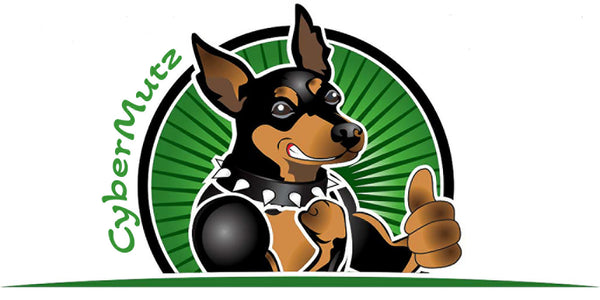
The Secret Lives of Stray Dogs – How They Survive and Form Packs
Share
The Secret Lives of Stray Dogs – How They Survive and Form Packs
Stray dogs are often seen as a symbol of loneliness, wandering through city streets or rural areas in search of food and shelter. But beyond the surface lies a complex and resilient existence, where these dogs navigate harsh environments and form tight-knit communities to survive. The lives of stray dogs are not only about survival; they are about adaptation, cooperation, and a remarkable ability to thrive against the odds.
In this post, we’ll explore the secret lives of stray dogs, how they manage to survive, and how they come together to form dog packs. Let’s dive into the fascinating world of street-smart pups and the dynamics of their survival.
🐾 How Do Stray Dogs Survive?
Surviving as a stray dog is a daily challenge that requires incredible instincts, adaptability, and resourcefulness. In a world filled with traffic, predators, and a lack of consistent food sources, stray dogs have to rely on their innate survival skills and any social networks they can form.
1. Scavenging for Food:
Stray dogs are skilled at finding food in urban and rural environments. Their ability to scavenge from trash cans, markets, restaurants, and other waste sources is crucial for their survival. They can also rely on the kindness of humans, who might feed them occasionally or leave food out for them.
However, for stray dogs in more rural or less populated areas, food might be harder to come by. These dogs have developed hunting skills and will sometimes prey on small animals like rats, rabbits, or birds to satisfy their hunger.
2. Finding Shelter:
Dogs need shelter to stay warm, safe, and protected from the elements. Stray dogs often seek out places like abandoned buildings, alleyways, parks, or even under cars to create temporary homes. They are resourceful when it comes to finding shelter and will seek out places that provide the most protection from weather conditions and threats.
Some stray dogs may co-opt human-made structures like train stations, warehouses, or even barns. These environments provide not only shelter but also a steady stream of food and potential companionship with other dogs.
3. Self-Preservation and Health:
Stray dogs are usually self-sufficient when it comes to their health. They rely on their instincts to avoid danger and stay clear of areas with heavy traffic or potential predators. They may avoid confrontation with other animals, especially larger ones, using flight rather than fight as their survival tactic.
While health risks like disease, malnutrition, and injury are common for strays, many of them are incredibly resilient. Dogs are natural survivors, and their immune systems can sometimes compensate for a lack of medical care. They also tend to develop habits or strategies to help them manage difficult situations, like limping to avoid strain on an injured leg or seeking water sources during hot weather.
🧑🤝🧑 How Stray Dogs Form Packs
One of the most fascinating aspects of stray dog behavior is their tendency to form packs. These packs can vary in size, from small groups of a few dogs to larger, more complex social structures. There are several reasons why dogs come together in packs and how they manage to cooperate for mutual survival.
1. Social Nature of Dogs:
Dogs are naturally social animals, and even in the wild, they live and hunt in groups. When it comes to survival on the streets, the need for companionship becomes even more critical. Stray dogs often band together for safety, protection, and the shared benefit of food and resources.
Packs provide security in numbers. A single stray dog might be more vulnerable to predators or other threats, but in a pack, the dogs can protect each other and help defend their territory. Stray dogs are also more likely to find food when they work together, using cooperative hunting or scavenging techniques.
2. Hierarchical Structure:
Like wolves, stray dog packs often develop a hierarchical structure. In these packs, there is usually an alpha dog, who leads the group and makes decisions regarding where to go for food, shelter, and safety. The other dogs in the pack will have varying roles, such as sentinels who keep watch for danger or younger dogs who are learning from the older, more experienced members.
The hierarchy is based on dominance and submission, and dogs communicate through body language, vocalizations, and posturing to establish their roles within the group. However, the pack structure can be fluid, and roles may change based on circumstances or competition for resources.
3. Mutual Support and Cooperation:
While the structure may seem rigid, stray dog packs are often based on mutual support and cooperation. Dogs within a pack will take care of each other, and it’s not uncommon for members to share food, protect each other from threats, or even look out for injured dogs within the group.
In fact, companionship is one of the strongest motivators for pack formation. Dogs find comfort and security in being with others, especially when facing the hardships of living as a stray. Whether it’s huddling together to stay warm on cold nights or protecting each other from predators, the emotional bond between dogs in a pack is a significant part of their survival.
4. Bonding and Grooming:
Stray dogs also engage in grooming behaviors to maintain their bond. While humans often associate grooming with affection, dogs use it as a way to maintain social ties. Grooming helps reinforce relationships within the pack and fosters a sense of trust and loyalty among the members.
By grooming each other, stray dogs not only keep clean but also show signs of affection and solidarity. These interactions can also serve as a calming activity that helps reduce stress in challenging environments.
5. Pack Territory:
In some cases, stray dog packs establish territorial boundaries. They may claim certain areas as their own, such as a section of a neighborhood or a particular park. These areas are fiercely defended from other dogs or potential threats. Stray dogs will use vocalizations and posturing to warn off intruders and protect their resources.
6. Raising Puppies in Packs:
Stray dogs often raise their puppies within the safety of the pack. The pack can help protect the mother dog during the vulnerable stages of pregnancy and nursing, and other members may assist in the care of the puppies. In this environment, the puppies are raised with the guidance and support of their pack, learning the skills they’ll need to survive as strays in the future.
🌍 The Future of Stray Dog Packs
While stray dog packs can be resourceful and incredibly resilient, the challenges they face are not insignificant. From disease outbreaks to human intervention, the survival of stray dogs is under constant threat. Fortunately, many communities and organizations are working to reduce the stray population through adoption, spay and neuter programs, and awareness campaigns.
However, it’s important to understand the significance of stray dog packs in their natural environment. These dogs, despite being outside of human homes, have complex social lives and emotional bonds. As we continue to support these animals through rescue efforts, it’s essential to consider their inherent pack behavior and social needs.
💡 Conclusion
The secret lives of stray dogs are filled with survival instincts, social bonds, and a deep sense of community. Stray dogs are not just wandering aimlessly through the streets—they are adapting to their environment, forming packs, and working together to thrive in difficult conditions. Their ability to cooperate, protect one another, and share resources is a testament to their strength and resilience.
As we continue to work toward bettering the lives of stray dogs through rescue efforts, spaying and neutering, and community programs, we must also recognize and respect their natural behaviors. These dogs are survivors in every sense of the word, and their ability to adapt and form strong social bonds shows us just how incredible they truly are.
CyberMutz.com (Dog-Themed Apparel & Accessories)
“CyberMutz.com – Explore a unique collection of dog-themed apparel, accessories, and gifts for pet lovers. Shop stylish, high-quality designs featuring your favorite dog breeds!” Category Page Descriptions: Dog Breed T-Shirts: “Show off your love for dogs with our exclusive breed-themed T-shirts. From German Shepherds to Chihuahuas, find high-quality, comfortable tees celebrating your favorite pup!” Dog Breed Pet Tank Tops: “Keep your furry friend stylish and comfortable with our dog breed-themed pet tank tops. Perfect for small and large dogs, these unique designs are a must-have!” Funny Dog-Themed Apparel: “Love dogs and humor? Our funny dog-themed apparel blends style with witty canine-inspired designs. Shop now for T-shirts, hoodies, and more!” Personalized Dog Merchandise: “Customize your dog lover’s gear with our personalized pet-themed apparel and accessories. Create a one-of-a-kind look for yourself or a perfect gift for a fellow dog enthusiast!”
CyberPussyKatz.com (Cat-Themed Apparel & Accessories)
“CyberPussyKatz.com – Celebrate your love for cats with our premium collection of feline-inspired apparel and accessories. Purr-fect designs for every cat lover!” Category Page Descriptions: Cat Breed T-Shirts: “Showcase your favorite feline friend with our stylish cat breed-themed T-shirts. From Maine Coons to Siamese, find the perfect tee for cat lovers!” Funny Cat-Themed Apparel: “Express your quirky side with our funny cat-themed T-shirts, hoodies, and more. Pawsome designs for those who love cats and humor!” Personalized Cat Merchandise: “Make it personal with custom cat-themed apparel and accessories. Create a unique gift or a special piece just for you!”
CyberMunkiez.com (Monkey-Themed Apparel & Accessories)
“CyberMunkiez.com – A fun collection of monkey-inspired apparel and accessories. Perfect for primate lovers who enjoy bold, playful, and unique designs!” Category Page Descriptions: Monkey-Themed T-Shirts: “Go bananas over our monkey-themed T-shirts! Whether you love capuchins, chimps, or gorillas, our designs bring out your wild side.” Funny Primate Apparel: “Add a touch of humor to your wardrobe with our hilarious monkey and ape-inspired apparel. Great for animal lovers and jungle enthusiasts!” Custom Monkey Merchandise: “Make it yours! Personalize your favorite monkey designs on T-shirts, hoodies, and more for a one-of-a-kind look.”
